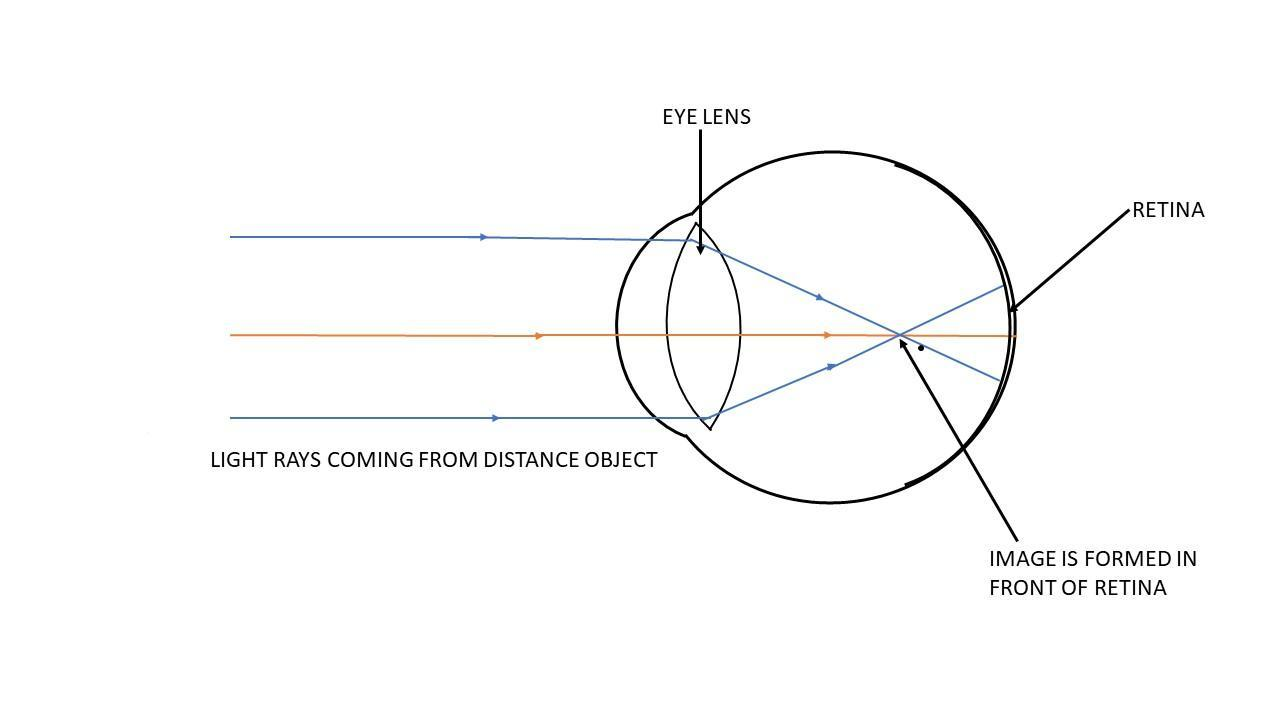
What does short-sightedness mean?
Answer
571.2k+ views
Hint: Over time the human eye will gradually lose its power of accommodation. A person is said to be suffering from an eye defect when he or she fails to see comfortably. Short-sightedness is one such eye defect that causes the viewer to have trouble seeing distant images.
Complete step by step answer:
Short-sightedness is an eye defect that causes the person to see far away objects as blurry or out of focus. The scientific term in use for short-sightedness is myopia. It is also known as near-sightedness. To an observer suffering from myopia, the objects in front of them will appear distinctly and clearly.
The reason for myopia is the light rays not focussing on the retina’s surface but in front of it. This happens if the eyeball is elongated. Then the image would fall in front of the retina. As a person gets older his or her cornea becomes too curved. This can be another reason for the light rays not being focussed on the retina. The figure given below illustrates this.

Additional Information: Short-sightedness can be corrected though. If the light rays could be made to fall on the retina instead of falling in front of it, myopia or near-sightedness could be corrected. This will then eliminate the blurry vision of faraway objects. This is done by using an appropriate spherical lens.
Note: Myopia or short-sightedness is not an eye disease, but it is an eye defect. Eye diseases are treated whereas eye defects are corrected. A concave lens is used to correct short-sightedness. The concave lens, when placed in front of the eye of a person with myopia, will shift the image to the surface of the retina.
Complete step by step answer:
Short-sightedness is an eye defect that causes the person to see far away objects as blurry or out of focus. The scientific term in use for short-sightedness is myopia. It is also known as near-sightedness. To an observer suffering from myopia, the objects in front of them will appear distinctly and clearly.
The reason for myopia is the light rays not focussing on the retina’s surface but in front of it. This happens if the eyeball is elongated. Then the image would fall in front of the retina. As a person gets older his or her cornea becomes too curved. This can be another reason for the light rays not being focussed on the retina. The figure given below illustrates this.

Additional Information: Short-sightedness can be corrected though. If the light rays could be made to fall on the retina instead of falling in front of it, myopia or near-sightedness could be corrected. This will then eliminate the blurry vision of faraway objects. This is done by using an appropriate spherical lens.
Note: Myopia or short-sightedness is not an eye disease, but it is an eye defect. Eye diseases are treated whereas eye defects are corrected. A concave lens is used to correct short-sightedness. The concave lens, when placed in front of the eye of a person with myopia, will shift the image to the surface of the retina.
Recently Updated Pages
Master Class 12 Business Studies: Engaging Questions & Answers for Success

Master Class 12 Economics: Engaging Questions & Answers for Success

Master Class 12 English: Engaging Questions & Answers for Success

Master Class 12 Maths: Engaging Questions & Answers for Success

Master Class 12 Social Science: Engaging Questions & Answers for Success

Master Class 12 Chemistry: Engaging Questions & Answers for Success

Trending doubts
What is BLO What is the full form of BLO class 8 social science CBSE

Citizens of India can vote at the age of A 18 years class 8 social science CBSE

Name the states through which the Tropic of Cancer class 8 social science CBSE

Full form of STD, ISD and PCO

Right to vote is a AFundamental Right BFundamental class 8 social science CBSE

Summary of the poem Where the Mind is Without Fear class 8 english CBSE




